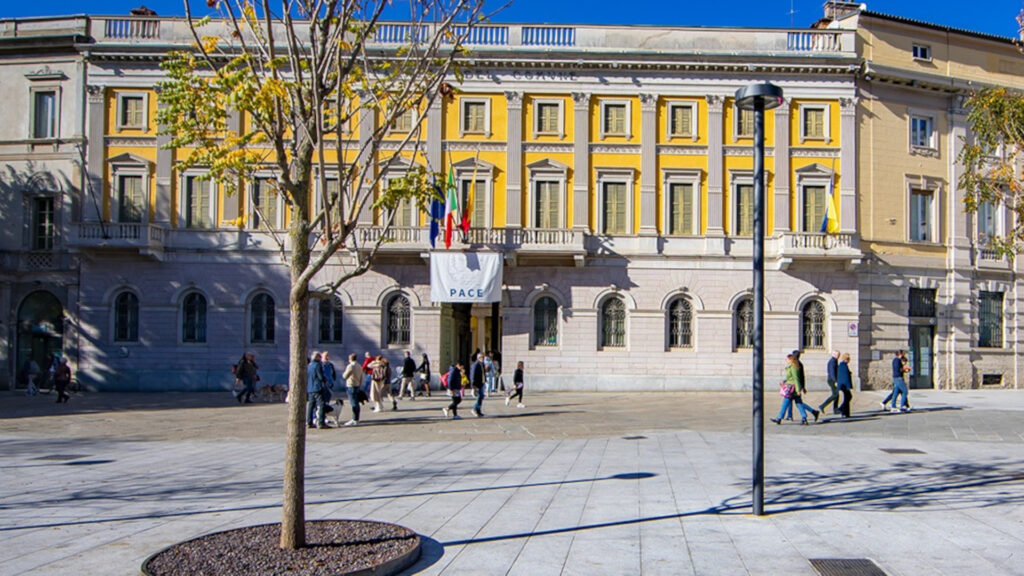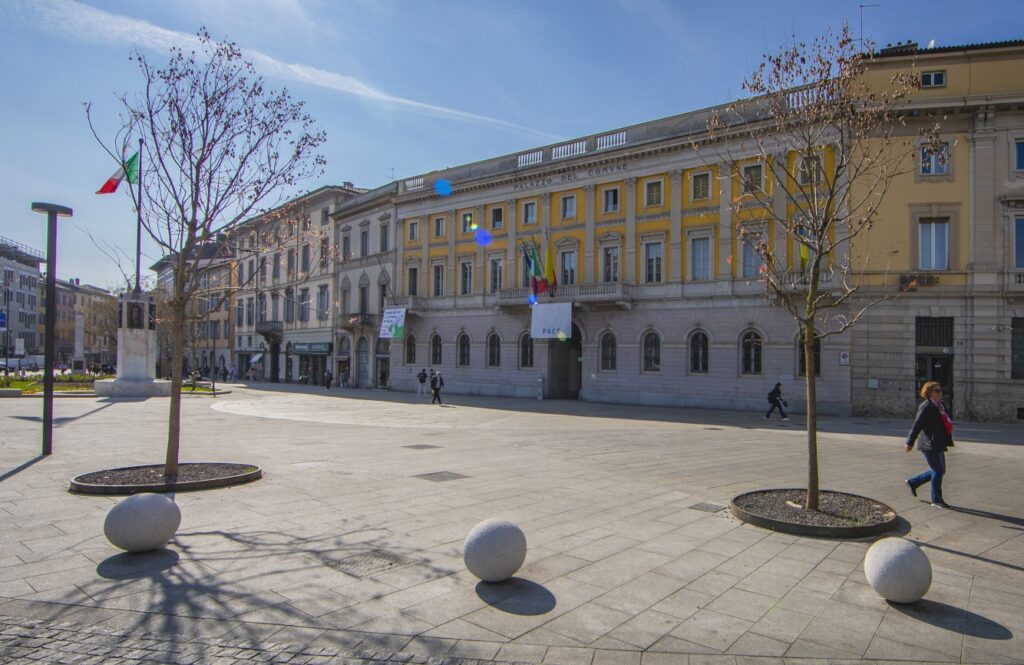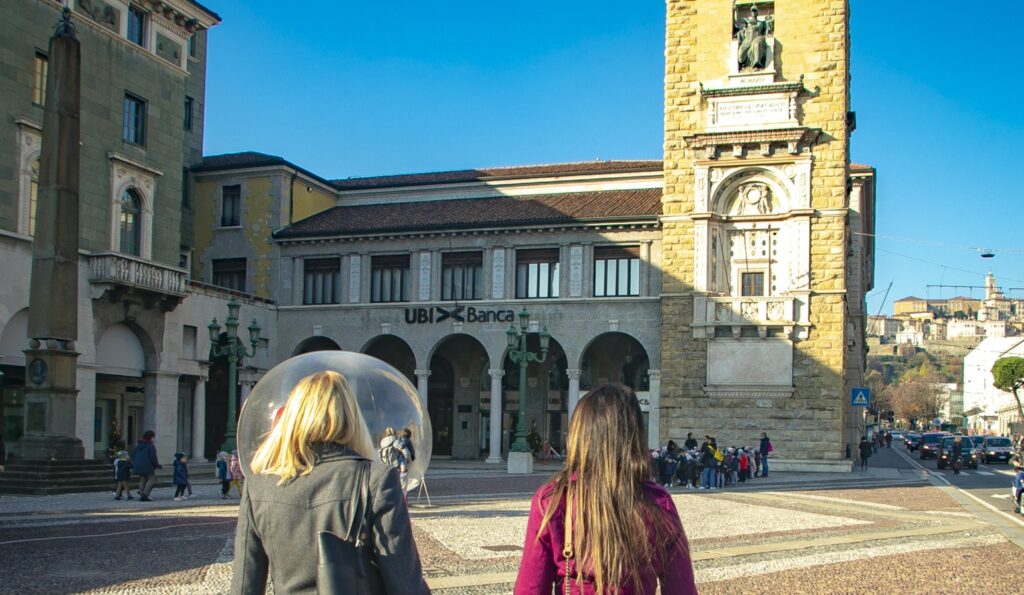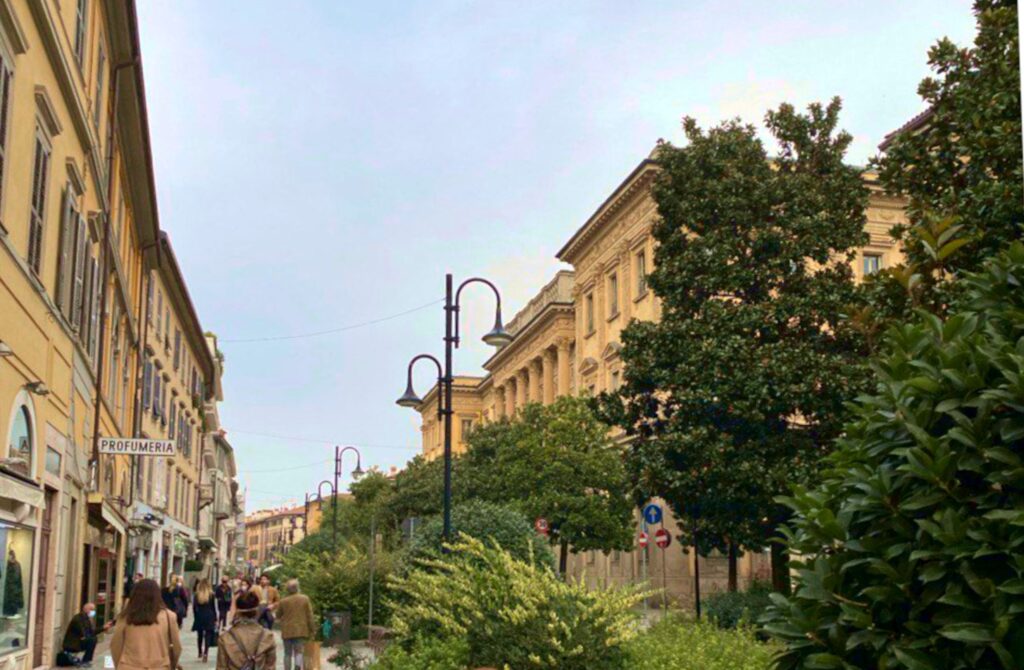The link between Bergamo and Protestantism is closer than it might appear at first glance.
An evangelical religious community has resided in the city for more than four centuries, and over time it has been an active participant in the economic, social and urban development of the area.
The earliest members of this community were Swiss from Glarus, Zurich and the Grisons: they descended to Italy via the S. Marco Pass, Valtellina, crossing Cornello dei Tasso and following the Via Mercatorum to the plains. They were mostly merchants active in the cotton and silk trade, the spinning of which was, for sixteenth-century Bergamo, an important source of income. Facilitated by the annual St. Alexander’s Fair and the climate of religious tolerance established by the Venetian Republic, in the 18th century these merchants moved permanently to the city, blending in with the pre-existing social fabric without renouncing their identity.
Their business acumen translated into economic success, which many reinvested in the textile industry, family residences and good works.
Various testimonies of this cultural and artistic enrichment remain, which will help you discover the center of Bergamo in a new light.
The starting point of this itinerary is the monumental building that perhaps best testifies to the fates and commitment of Bergamo’s Protestant community: Palazzo Frizzoni.

Built in the years 1836-40 at the behest of Enrico Frizzoni, the last member of one of the city’s leading Waldensian families, Palazzo Frizzoni is a magnificent Neoclassical-style building now housing Bergamo’s City Hall.
Inside are wonderfully decorated rooms and an art gallery containing some 80 paintings.
Two streets equally linked to Waldensian history flow onto Matteotti Square, moreover: these are Via S. Orsola and Via Borfuro, where the first “in house” churches of Bergamasque Protestants were located, first in Via Sant’Orsola at the Bonorandi family, later in Via Borfuro at the Mariton family, related to those Blondels to whom Enrichetta, Alessandro Manzoni’s wife, would be born.
To follow the route, take Via Borfuro and, when you reach the end, turn left to take Via Sant’Alessandro.
After about 120, you will find Via Sant’Orsola on your left, which will bring you back to the vicinity of Palazzo Frizzoni.

Keeping Palazzo Frizzoni on your left, continue straight ahead and walk along Piazza Matteotti until you reach the crosswalk. Here turn left to take Viale Roma: after about 130 meters, on the left, at number 2/a you will encounter another important building, linked in this case also to current history: the Temple of the Evangelical Community.
Usually open on Sunday mornings for religious services, it is a fine example of 19th-century neo-Renaissance architecture.

To reach the last stages of the itinerary, take the most scenic route by taking Via Petrarca, which is almost opposite the Temple and runs alongside the monumental Piazza Libertà. Keeping to the side of the Bank of Italy, after a few steps you will be able to access the renovated Piazza Dante, which flows onto the Sentierone through a splendid columned portico. From here, go right and walk down Via Tasso to number 55, where you will find the Protestant Cultural Center.
Also located in the same building is the Library named after Gerolamo Zanchi, a scholar of Bergamascan origin who was one of the leading representatives of the European Waldensian community.
The neighborhood is particularly relevant to the history of the local Waldensian community because, as early as the 16th and 18th centuries, it recorded, along with Borgo Pignolo, the highest concentration of residents of the Protestant faith, mostly Swiss.
It was in Via Tasso that the headquarters of the area’s first trade association was founded – precisely by the Waldensians – and it was in Borgo Pignolo, one of Bergamo’s most beautiful and ancient villages, that another private Waldensian church was located.
For a complete overview of Bergamo’s Protestant sites, 140 meters further on, still on the left side, you will encounter theformer CaprottiPalace and Park, commissioned in the 1800s by the family of the same name of industrialists from Brianza, who were in close relations with the Waldensian community (as evidenced by the creation of the Caprotti Zavaritt retirement home in Gorle, founded in 1980).
In addition to admiring the building’s fine decorations, thanks to the large garden you can also enjoy a green break in the heart of the city, among ponds and swans.
